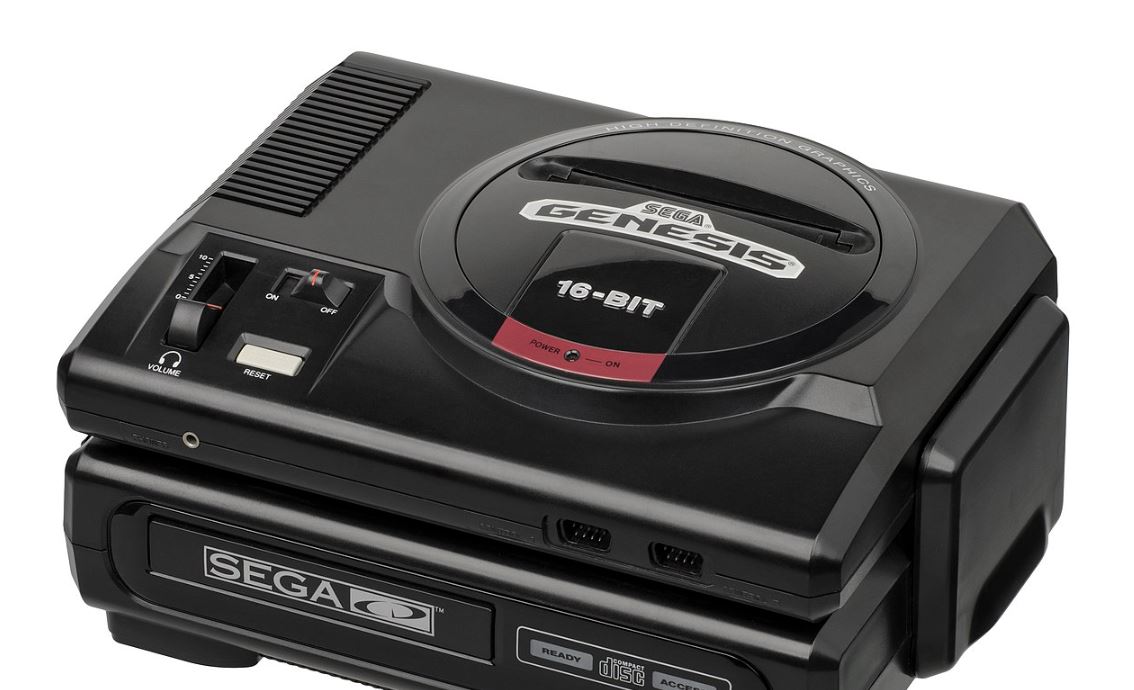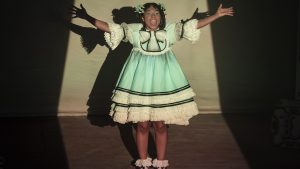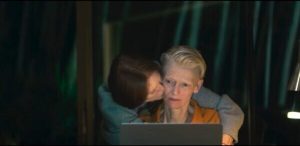
In the ‘90s, Sega was known for taking big risks. Some of those risks (like the aggressive marketing of the Genesis and Sonic the Hedgehog) paid off. Others, like the surprise early launch of the Saturn, have gone down in gaming history as prime examples of what not to do in the console business. But then there were the fascinating experiments with add-ons like the Sega CD, which, while not commercially successful, offered some unique experiences that are still fondly remembered by those who owned them.
The Sega CD was not the first add-on of its kind, but it was the one that gained the most traction in the North American market, and for gamers who picked it up, it offered a glimpse into the future of gaming, where the larger data storage of discs meant bigger games with better graphics, sound, and full motion video.
Whether they were good, bad, or just plain ugly, these are the games that defined the Sega CD.
Night Trap (1992)
The Sega CD launched in North America on October 15, 1992, with such must-have games as…um, well, there were a couple of titles that let you edit music videos for INXS and Marky Mark and the Funky Bunch. Ok, it was a really, really bad launch lineup, and the most notable Sega CD game from those early ideas isn’t even remembered for its quality.
Night Trap is essentially an interactive movie where you spring traps on enemies trying to invade a sleepover full of teenage girls led by Diff’rent Strokes actress Dana Plato (who was pushing 30 by the time the game was released). Despite being technically innovative, it was not a great game back then, and it’s aged pretty badly. And even though it actually had no nudity and less violence than the average ‘80s horror movie, somehow all of this was enough to trigger congressional hearings that ultimately resulted in the creation of the ESRB, which is really the only reason anyone even remembers the game after all these years.
Sewer Shark (1992)
Releasing a few weeks after the Sega CD launch, Sewer Shark was another interactive movie with gameplay that was at least marginally better than Night Trap. You don’t really have much control over the action, but you can at least shoot at poorly animated bats, giant scorpions, and mechanical moles that pop up as the video of your journey through the sewers scrolls by.
The thing about Sewer Shark, though, is that you almost have think of it in the same way as the first talking movies. No, it’s not at all impressive now, and an amateur programmer could pump out something similar with better gameplay in a weekend now. But when it came out, this was really cutting-edge stuff that blew the typical SNES and Genesis game out of the water. It was even bundled with the Sega CD for a while, making it one of the add-ons best selling games. But is it actually fun to play now if you didn’t grow up with it? Eh, not really.
Final Fight CD (1993)
Developers quickly realized they could port games from other platforms to the Genesis add-on, taking advantage of the Sega CD’s new technology with varying results. This usually meant adding FMV and additional content. One of the better examples of this approach was Final Fight CD. If you’ve never played Final Fight, absolutely stop what you’re doing and check it out now. It’s an awesome classic arcade beat ‘em up that still holds up against modern imitators.
The original SNES release was good, but had to make several changes to fit on a 16-bit cartridge. The Sega CD version, however, brought back all that cut content, and even added voice acting, an arranged soundtrack, and a time attack mode. It still wasn’t arcade perfect, but it was a damn fine example of the advantages of the disc format.
Lunar: The Silver Star (1993)
Sega was slow to get development kits for the Sega CD out the door, which is part of the reason why so many early Sega CD games were not great. But in 1993, the add-on received what really was a killer app in Lunar: The Silver Star. At its core, this was a traditional 16-bit turn-based RPG with graphics that were slightly above average and some unusually sharp writing, but the additions of voice acting and animated videos were revolutionary for the time.
No console RPG had seen this level of quality before, and it really established the template that many RPGs followed on the original PlayStation. Even many modern indie RPGs owe a lot to Lunar. It’s just a shame that neither The Silver Star nor its excellent sequel Eternal Blue are readily available on modern platforms.
Sonic CD (1993)
Like many Sega CD titles, Sonic CD was initially intended to be an enhanced port of the first Sonic the Hedgehog game. Somewhere along the way, it morphed into something much bigger and better. The trademark classic Sonic gameplay is here in full glory, but with an awesome new time travel mechanic, a fantastic CD-quality soundtrack, and some surprisingly cool animated cutscenes. Plus, this was the game that debuted Amy Rose and Metal Sonic.
While the Sega CD was already starting to display some serious limitations just a year after launch, this was the game that really highlighted the strengths of the technology. It’s arguably the best game for the add-on, and is still in the conversation as possibly the best game in the entire Sonic franchise.
Mortal Kombat (1994)
Maybe no Sega CD game exemplifies the positives and negatives of the add-on better than the port of Mortal Kombat. Some gamers still argue that it was the best port the game received in the ‘90s thanks to more fluid animation and a CD-quality soundtrack closer to what was found in the arcades.
But it’s far from perfect. First, it arrived more than a year after the Genesis and SNES versions. There are strange miscues with the music, with some tracks playing for the wrong stages. And there are the noticeable load times, not only between matches, but also every time Shang Tsung morphs into a different character during the final boss fight. It was bad back then, but experiencing that now in the era of SSDs is infuriating. Mortal Kombat showed everything the Sega CD was capable of, but it wasn’t always a good look.
Star Wars: Rebel Assault (1994)
No matter how obscure or short-lived the console or add-on is, odds are that someone is going to release a Star Wars game for it. But Rebel Assault ultimately exhibited many of the same problems as the Mortal Kombat port. It was cool to see actual footage from the Star Wars films in a video game (albeit heavily compressed), and the music quality was outstanding, but the graphics were so pixelated that it was hard to even see what you were shooting at a lot of the time. That’s kind of a big deal in any shooter.
Even if you check out the better PC and 3DO versions of Rebel Assault, it’s still not a great game, and it was soon eclipsed by its sequel. Rebel Assault on the Sega CD sold well because of course almost any Star Wars game sells well, and it helped generate a little buzz for what the Sega CD could do, but it’s not a pleasant experience to return to now.
Snatcher (1995)
By 1995, the writing was on the wall that the end was nigh for the Sega CD. Sega themselves had largely turned its attention to the ill-fated Saturn. Despite dwindling support, some real gems came out for the Sega CD at this point. Chief among them this cyberpunk graphic adventure written and designed by none other than Metal Gear Solid creator Hideo Kojima.
Snatcher had actually been released for Japanese computers several years prior, but the Sega CD port marked the first time it came to the West. The translation is surprisingly good, keeping the adult themes and most of the more controversial content, and the gameplay was tweaked to make it more interactive (and arguably better). Despite strong reviews, the game barely moved any copies in the U.S., and the Sega CD version is now quite valuable if you can even find a complete copy online.
Popful Mail (1995)
Though Popful Mail was an original Japanese creation, Sega originally wanted to release it as a Sonic the Hedgehog spinoff called Sister Sonic. It would have starred Sonic’s female relative described as a “mature and flirtatious bounty hunter.” Even in the ‘90s, this was exactly as stupid as it sounds now, and Sega abandoned the idea after fan outcry.
Frankly, Popful Mail didn’t need any connections to better-known Sega franchises. It was a rare (for the time) platformer with RPG elements and multiple playable characters that was just plain fun to play. It’s also quite possibly the best-looking game for the Sega CD.
Shining Force CD (1995)
Shining Force CD was not the last Sega CD title released in North America. That distinction goes to a surprisingly decent enhanced port of the Genesis Demolition Man game based the Sylvester Stallone film. But Shining Force CD is the last truly great game released for an add-on that had far too few of them.
It’s actually a port of two Shining Force Gaiden titles first released for the Game Gear handheld, just with much better graphics and sound. It may not be the best swan song for a platform, but Shining Force has always been a surprisingly good strategy RPG series even if it never lit up the sales charts, and this is as good as any of the better-known entries. And at least putting these titles on the Sega CD meant gamers didn’t have to deal with the Game Gear’s infamously poor battery life, which was known to completely drain six AA batteries with less than an hour of gameplay.
The post The Games that Defined the Sega CD appeared first on Den of Geek.



